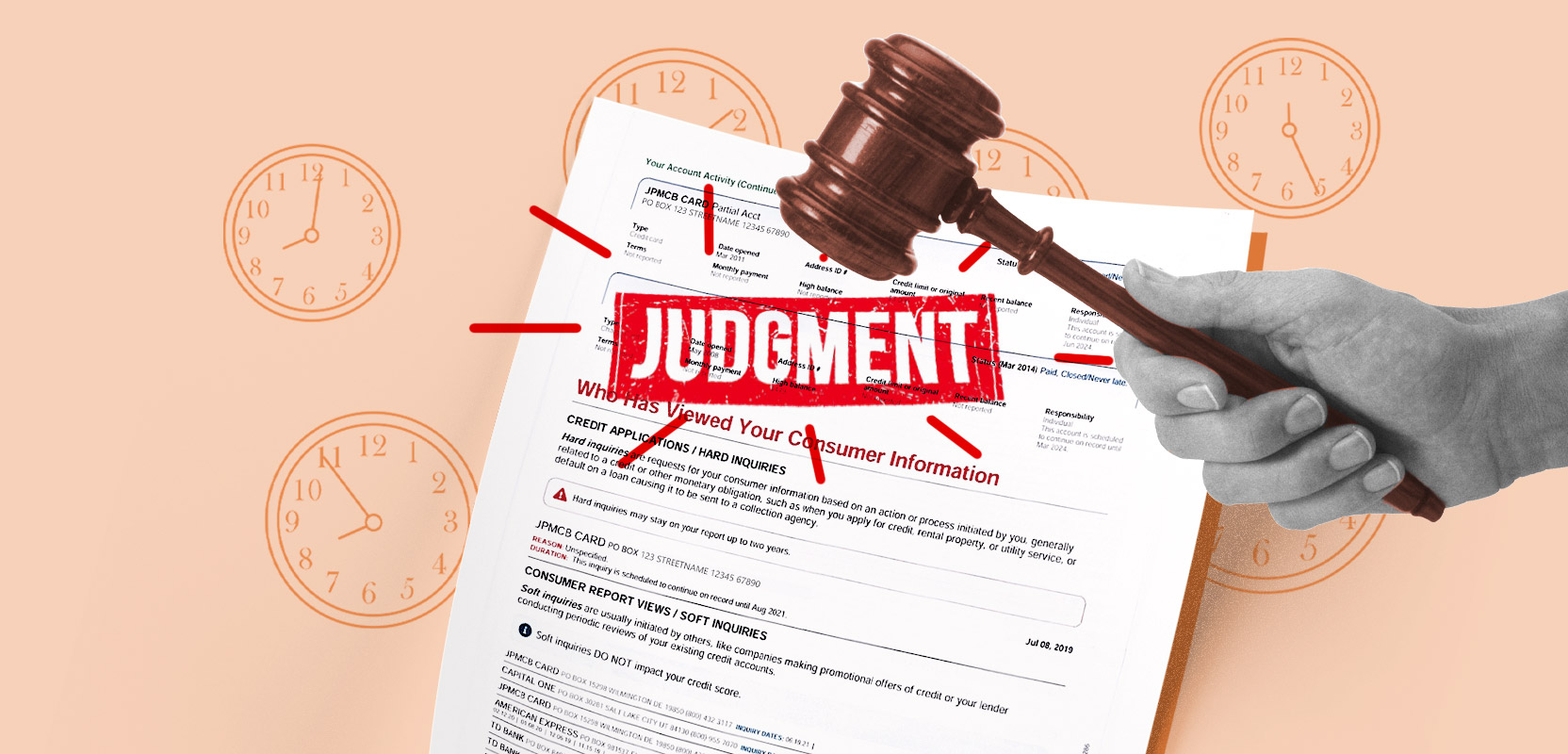Home>Finance>When Does Your Health Insurance Deductible Reset?


Finance
When Does Your Health Insurance Deductible Reset?
Published: October 30, 2023
Learn about when your health insurance deductible resets and how it impacts your finances. Find out how to plan for the new deductible year.
(Many of the links in this article redirect to a specific reviewed product. Your purchase of these products through affiliate links helps to generate commission for LiveWell, at no extra cost. Learn more)
Table of Contents
Introduction
When it comes to health insurance, understanding the ins and outs of your policy can be confusing. One important aspect to grasp is how health insurance deductibles work and when they reset.
A health insurance deductible is the amount of money that you must pay out of pocket for covered medical expenses before your insurance kicks in. Once you reach your deductible, your insurance plan will typically start covering a portion of your medical costs.
But when exactly does your health insurance deductible reset? The answer depends on various factors, including the type of policy you have and the specific terms outlined by your insurance provider.
In this article, we will delve into the intricacies of health insurance deductibles and explore the factors that determine the timing of their reset. We will also discuss common deductible reset dates, exceptions to the rule, and provide tips on managing your insurance deductible effectively.
By the end of this article, you will have a clearer understanding of when your health insurance deductible resets and how to navigate your healthcare expenses more efficiently.
Understanding Health Insurance Deductibles
Before we dive into when health insurance deductibles reset, it’s crucial to have a good understanding of what exactly a deductible is.
A health insurance deductible is the predetermined amount of money that you are responsible for paying before your insurance coverage kicks in. It acts as a threshold that you must meet before your insurance plan starts sharing the cost of your medical expenses. Deductibles can vary greatly depending on your insurance policy and can range from a few hundred dollars to several thousand dollars.
It’s important to note that deductibles typically apply to certain types of services, such as hospital stays, surgeries, and specialist visits. Some preventive services, such as annual check-ups or vaccinations, may be exempt from the deductible and covered at 100% by your insurance provider.
Once you have satisfied your deductible, your insurance plan will usually begin sharing the cost of your medical expenses through coinsurance or copayments. Coinsurance is a percentage of the cost that you’re responsible for, while copayments are a fixed amount you pay for specific services.
However, it’s important to remember that even after you’ve met your deductible, you may still have out-of-pocket expenses in the form of coinsurance or copayments until you reach your out-of-pocket maximum. This is the maximum amount you will have to pay in a given year before your insurance covers 100% of your medical costs. The out-of-pocket maximum resets on an annual basis, usually at the beginning of the calendar year.
Now that we have a basic understanding of health insurance deductibles, let’s explore how they work and when they reset.
How Health Insurance Deductibles Work
Health insurance deductibles are an essential component of your insurance policy, as they determine the amount you must pay out of pocket for medical expenses before your insurance coverage begins.
When you receive medical care covered by your insurance plan, the provider will bill both you and your insurance company. The provider’s bill will be applied towards your deductible, meaning you will be responsible for paying the full amount until your deductible is met.
Once you reach your deductible, your insurance plan will start sharing the cost of your healthcare expenses. This is usually done through coinsurance or copayments, where you pay a percentage of the bill while your insurance covers the rest.
It’s important to note that not all medical services count towards your deductible. Some services, such as preventive care or routine check-ups, may be covered in full by your insurance company, even before you’ve met your deductible. This is because preventive care is often encouraged as a way to catch health issues early and prevent more expensive treatment down the line.
Health insurance deductibles are typically assessed on a yearly basis. This means that each year, you will start with a new deductible that you’ll need to satisfy before your insurance coverage kicks in.
While deductibles reset on an annual basis, the timing can vary depending on your insurance plan. For most individuals, their health insurance deductible will reset at the start of a new calendar year, on January 1st. However, some insurance plans may operate on a different schedule, such as a plan year or an anniversary date.
Understanding how health insurance deductibles work is crucial in managing your healthcare expenses. By knowing when your deductible resets and how it impacts your out-of-pocket costs, you can plan accordingly and make informed decisions about your medical care.
Factors that Affect Deductible Reset Timing
The timing of when your health insurance deductible resets can vary depending on several factors. It’s important to familiarize yourself with these factors to understand when you can expect your deductible to start afresh.
1. Insurance Plan Type: The type of health insurance plan you have can determine when your deductible resets. Most plans operate on a calendar year basis, meaning the deductible resets on January 1st. However, some plans may have a different reset period, such as a plan year or an anniversary date.
2. Insurance Provider: Different insurance providers may have their own policies regarding deductible resets. It’s important to read your policy documents or contact your insurance provider directly to determine the specific reset timing for your plan.
3. Employer Agreement: If you obtain health insurance through your employer, the reset timing of your deductible may be influenced by the agreement between your employer and the insurance provider. In some cases, employers may choose to align the reset timing with their fiscal year or other administrative considerations.
4. Contract Renewal: If you have an individual health insurance plan, the reset timing of your deductible may be linked to the annual contract renewal with your insurance provider. This means that your deductible may reset on the anniversary date of your policy.
5. Policy Changes: It’s important to review your insurance policy annually, as changes in your plan terms or coverage may also impact the timing of your deductible reset. It’s possible that your insurance provider could update the deductible reset timing during policy renewal.
It’s crucial to review your insurance policy documents or contact your insurance provider directly to determine when your deductible resets. Understanding the factors that influence the reset timing will help you effectively manage your healthcare expenses and budget accordingly.
Calendar Year Deductibles
A calendar year deductible is one that resets at the start of each new calendar year, typically on January 1st. This is the most common type of deductible reset period for health insurance plans.
With a calendar year deductible, any expenses you incur towards meeting your deductible reset to zero at the beginning of the year. This means that you’ll need to start accumulating expenses again to reach your deductible before your insurance coverage kicks in.
For example, let’s say your health insurance plan has a $1,000 deductible. At the beginning of the year, you have not incurred any medical expenses and your deductible balance is $0. If you have a medical procedure in February for which the billed amount is $500, that amount will be applied towards your deductible. Your deductible balance will then be $500, and you will need to pay the remaining $500 out of pocket to reach your deductible.
Reaching your calendar year deductible is an important milestone, as it signifies that your insurance coverage will begin sharing the cost of your healthcare expenses. However, it’s important to remember that even after you’ve met your deductible, you may still have to pay coinsurance or copayments until you reach your out-of-pocket maximum.
It’s worth noting that some insurance plans offer partial deductible resets during the year. This means that if you have not reached your full deductible by the end of the calendar year, the remaining balance may carry over to the next year.
Calendar year deductibles provide a clear and predictable reset period, allowing individuals and families to plan their healthcare expenses accordingly. It’s essential to keep track of your deductible balance and understand when it resets to make informed decisions about your medical care.
Plan Year Deductibles
While calendar year deductibles are the most common, some health insurance plans operate on a different reset period known as the plan year deductible. This reset period is specific to the individual insurance plan and may vary from person to person.
A plan year deductible is based on the anniversary date of your health insurance policy. It typically starts on the date that your insurance coverage began, and it resets on the same date each year. For example, if you purchased your insurance policy on April 15th, your plan year deductible will reset every April 15th.
With a plan year deductible, any medical expenses you incur towards meeting your deductible reset on the anniversary date of your policy. This means that on the reset date, your deductible balance will return to zero, and you will need to start accumulating expenses again to satisfy your deductible.
Understanding your plan year deductible is crucial for budgeting your healthcare expenses throughout the year. It’s important to keep track of the timing of your deductible reset and plan accordingly, especially if you have ongoing medical needs or anticipate upcoming procedures.
It’s worth noting that with plan year deductibles, the reset timing may vary for each policyholder within the same insurance plan. This is because the reset is based on individual policy start dates, which can differ depending on when each person enrolled in the plan.
If you’re unsure about the reset timing of your plan year deductible, it’s recommended to refer to your insurance policy documents or contact your insurance provider for clarification.
By understanding the nuances of plan year deductibles, you can effectively manage your healthcare expenses and make informed decisions about your medical care throughout the year.
Common Deductible Reset Dates
The timing of when health insurance deductibles reset can vary depending on your specific policy, insurance provider, and employer agreements. However, there are a few common deductible reset dates that are widely used by insurance plans.
1. Calendar Year (January 1st): The most common deductible reset date is January 1st, which aligns with the start of the new calendar year. Many health insurance plans reset their deductibles on this date, meaning that any expenses incurred after January 1st will count towards the new deductible amount.
2. Plan Year (Anniversary Date): Some insurance plans reset deductibles on the anniversary date of the policy. This means that your deductible will reset exactly one year from the date your insurance coverage began.
3. Employer Fiscal Year: If you obtain health insurance through your employer, the deductible reset date may align with the company’s fiscal year. This can vary widely depending on the employer, as fiscal years can start on different dates throughout the year.
It’s important to note that while these are common deductible reset dates, it’s essential to refer to your insurance policy documents or contact your insurance provider to determine the specific reset date for your plan. This way, you can accurately track your deductible and plan your healthcare expenses accordingly.
Remember, reaching your deductible is an important milestone as it signifies that your insurance coverage will start sharing the cost of your medical expenses. By staying informed about deductible reset dates, you can effectively manage your healthcare costs and budget throughout the year.
Exceptions to Deductible Reset Timing
While the majority of health insurance plans have deductible reset dates based on the calendar year or plan year, there are some exceptions to these standard timing guidelines. It’s important to be aware of these exceptions to understand when your deductible may reset.
1. Non-Calendar Year Plans: Some health insurance plans operate on non-calendar year deductibles, meaning their reset dates do not align with January 1st. These plans may have reset dates based on the fiscal year of the insurance company or the employer if it’s an employer-sponsored plan.
2. Anniversary Date of Coverage: In certain cases, the deductible may reset on the anniversary date of when your insurance coverage began. This is common for individual insurance plans or plans that are not tied to an employer’s group policy.
3. Rollover Deductibles: Some insurance plans offer a deductible carryover provision, allowing you to carry a portion of your deductible from the previous year into the new year. If you have not fully met your deductible by the end of the year, the remaining balance may carry forward and count towards the new deductible.
4. Contractual Agreements: In some cases, insurance companies may have specific contractual agreements or negotiated terms that deviate from the standard deductible reset timing. This can depend on various factors, such as the employer’s agreement with the insurance provider or a unique arrangement between the policyholder and the insurer.
It’s important to review your insurance policy documents or contact your insurance provider directly to determine any exceptions or unique provisions related to the timing of your deductible reset. Understanding these exceptions will allow you to effectively plan your healthcare expenses and budget accordingly.
Remember, staying informed about the specific rules and exceptions of your deductible reset can help you navigate your health insurance coverage and optimize your healthcare costs throughout the year.
Tips for Managing Insurance Deductibles
Managing your health insurance deductible effectively is important for minimizing out-of-pocket expenses and maximizing the benefits of your insurance coverage. Here are some tips to help you navigate and manage your insurance deductibles:
1. Understand your policy: Take the time to thoroughly review your insurance policy documents. Familiarize yourself with the details of your deductible, including the amount and reset timing. Understanding the terms and coverage of your policy will help you make informed decisions about your healthcare expenses.
2. Budget for healthcare expenses: Plan and budget for your healthcare expenses throughout the year. Consider your deductible amount when setting aside funds for medical costs. This way, you’ll be financially prepared to cover the expenses until your deductible is met.
3. Use in-network providers: Visit healthcare providers that are in-network with your insurance plan. In-network providers have negotiated rates with your insurance company, which can help lower your out-of-pocket costs and contribute towards meeting your deductible more efficiently.
4. Take advantage of preventive care: Many insurance plans offer free or discounted preventive services, such as annual check-ups, vaccinations, and screenings. These services are often exempt from the deductible, allowing you to access important preventive care without worrying about meeting your deductible first.
5. Plan medical procedures: If you have upcoming medical procedures or surgeries, consider scheduling them when you’re closer to meeting your deductible. This way, you can take advantage of your insurance coverage and reduce your out-of-pocket costs for those specific services.
6. Review billing statements: Carefully review your medical billing statements to ensure that they accurately reflect the services you received and the amounts charged. Mistakes or billing errors can lead to unnecessary expenses. If you spot any discrepancies, contact your healthcare provider or insurance company to resolve the issue.
7. Explore healthcare savings accounts: Health Savings Accounts (HSAs) or Flexible Spending Accounts (FSAs) are tax-advantaged accounts that allow you to set aside pre-tax funds for medical expenses. Contributing to these accounts can help you cover your deductible and other healthcare costs while lowering your taxable income.
8. Plan for out-of-pocket maximum: Understand your insurance plan’s out-of-pocket maximum, which is the maximum amount you will have to pay in a given year before your insurance covers 100% of your medical costs. Once you reach this threshold, your insurance will typically cover the remaining expenses. Knowing this can help you plan and budget accordingly.
9. Seek assistance if needed: If you’re struggling to meet your deductible or manage your healthcare expenses, don’t hesitate to reach out to your healthcare provider or insurance company. They may have resources or programs available to assist you in navigating your coverage and managing costs.
By following these tips, you can effectively manage your insurance deductibles, make the most of your coverage, and navigate your healthcare expenses more efficiently.
Conclusion
Understanding when your health insurance deductible resets is vital for managing your healthcare costs and maximizing the benefits of your insurance coverage. Whether it’s a calendar year deductible that resets on January 1st or a plan year deductible that aligns with the anniversary date of your policy, knowing when your deductible restarts allows you to plan your medical expenses more effectively.
Factors such as your insurance plan type, provider, and employer agreements can influence the timing of your deductible reset. It’s essential to review your insurance policy documents or contact your insurance provider directly to determine the specific reset date for your plan.
Managing your insurance deductibles requires proactive budgeting, understanding your policy details, and making informed choices about your healthcare providers and services. Taking advantage of preventive care, using in-network providers, and carefully reviewing your billing statements are just a few strategies to help you navigate your deductibles more efficiently.
Remember, if you have questions or concerns about your deductible or managing your healthcare expenses, don’t hesitate to reach out to your healthcare provider or insurance company for assistance. They can provide guidance and resources to help you make informed decisions about your medical care.
By being proactive, knowledgeable, and strategic, you can successfully manage your health insurance deductibles and ensure that you receive the care you need while minimizing your out-of-pocket expenses.














